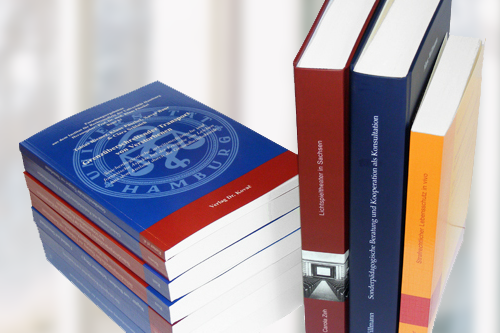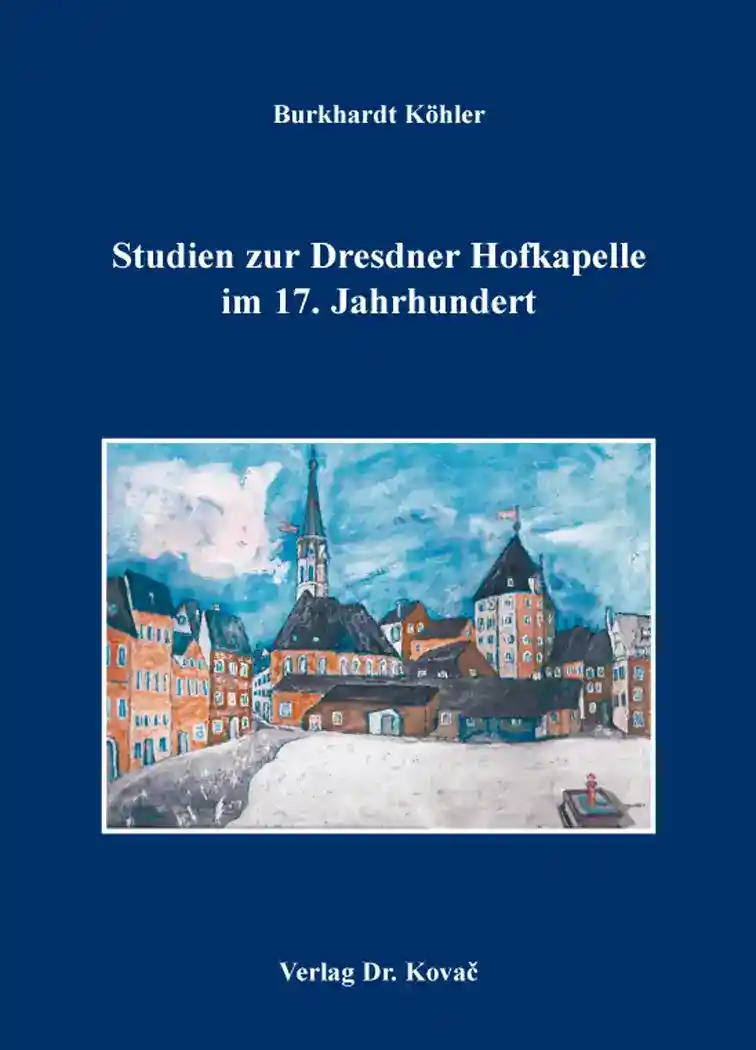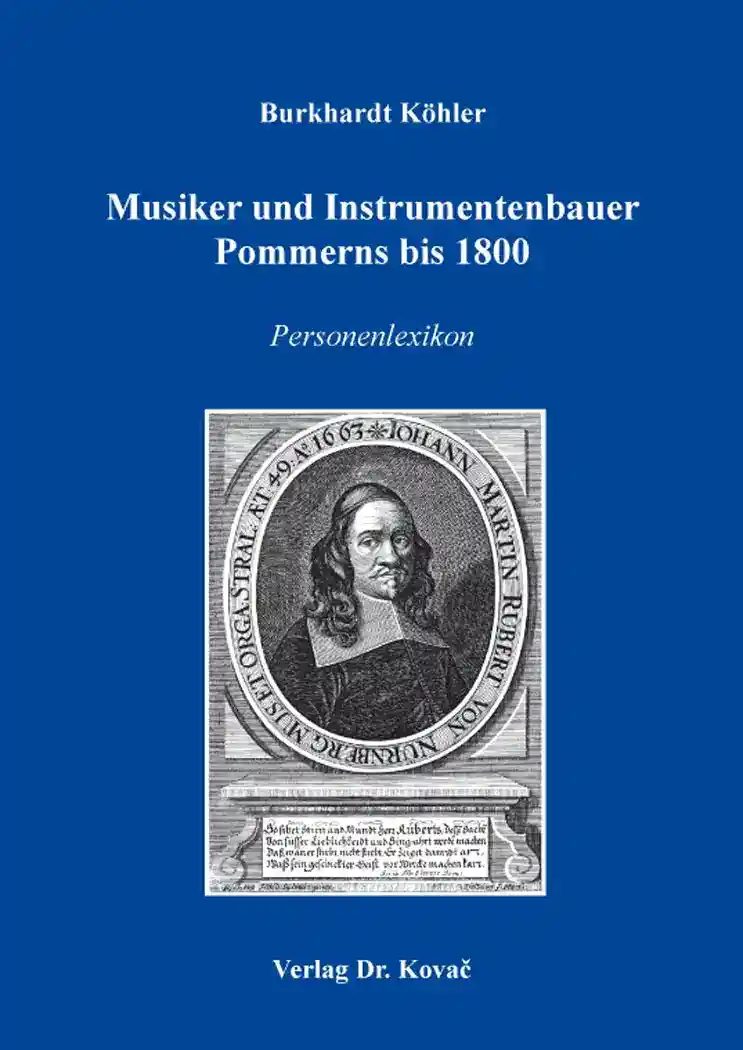Burkhardt KöhlerStudien zur Dresdner Hofkapelle im 17. Jahrhundert
Studien zur Musikwissenschaft, volume 33
Hamburg 2015, 112 pages
ISBN 978-3-8300-8399-3 (print) |ISBN 978-3-339-08399-9 (eBook)
Rezension
[...] Die Studie zum Convivium ermöglicht aufgrund der Aufarbeitung zahlreicher Akteneinträge interessante Einblicke der Begegnungen zwischen Schein, Schütz und Prätorius. [...]
[...] Schütz’ Dafne von 1627 ist ein bedeutsames historisches Zeugnis für die Entstehung der Oper in Deutschland. [...] „Pro Dafne“, der Titel der Studie, setzt sich lobenswert für ein gescheitertes Werk ein, dessen historischer Wert durch sein Scheitern nicht geschmälert wird.
About this book deutschenglish
The three articles of the "Studien zur Dresdner Hofkapelle im 17. Jahrhundert" are directly or indirectly connected with the composer Heinrich Schütz. The first part deals with the organist Johann Vierdanck from Stralsund who was a choir boy under the direction of Schütz in the first decades of the 17th century. I succeeded in establishing when and where he was born, who his parents were, and in which musical environment he grew up. A document unknown so far gives information about his position in the Dresdner Hofkapelle and his relation to Heinrich Schütz. The question if Vierdanck was his pupil is discussed in detail. The existing knowledge about Vierdanck's last teacher Wilhelm Günter is supplemented. The second article deals with a Convivium that took place in Weißenfels 1615. Heinrich Schütz and Johan Herman Schein were also among the people present. A detailed description of the activities of Heinrich Schütz in 1615 is given and which career prospective were there for him. It is made clear why the Elector of Saxony, Johann Georg I., illegally ordered Schütz to come to Dresden. Besides, the Convivium gives an interesting insight into the intimate circle of friends of the two musicians. The third article deals extensively with the opera "Dafne" of Heinrich Schütz. It was motivated by the assertion already voiced in the 80’s of the 20th century that this opera might be a legend. My extensive basic research has brought to light so far unknown details that confirm the original affirmative opinion of the 19th century. The question is discussed whether Schütz at all could meet the requirements to compose an opera in the modern Italian style. This, too, has been disputed lately. Furthermore, the relevant events of the so-called "Torgauer Hochzeit" in 1627, where the opera "Dafne" was performed, are examined closely. The Italian archetypes of the German "Dafne" are presented and after that the libretto by Martin Opitz is analysed. Here, too, it becomes clear that there is a high probability that this opera like the Italian archetypes is a through-composed work. A tailor’s bill unknown so far which has come to my attention gives conclusive evidence about the actors that took part in the opera. Finally, I venture the attempt to design a musical functional diagram of the "Dafne" on the basis of the libretto by Opitz.Kontaktmöglichkeit
Keywords
17. JahrhundertDresdner HofkapelleHeinrich SchützJohann H. ScheinJohann VierdanckKapellknabenLibrettoMartin OpitzMatthias WeckmannMichael PrätoriusMusikgeschichteOperOper DafneTorgauer Hochzeit 1627Wilhelm GüntherIhr Werk im Verlag Dr. Kovač

Möchten Sie Ihre wissenschaftliche Arbeit publizieren? Erfahren Sie mehr über unsere günstigen Konditionen und unseren Service für Autorinnen und Autoren.
Weiteres Buch des Autors
Musiker und Instrumentenbauer Pommerns bis 1800
Personenlexikon. Mit Orts- und Berufsregister
2. überarbeitete Auflage
Hamburg 2020, ISBN 978-3-339-11614-7 (Print) |ISBN 978-3-339-11615-4 (eBook)
Schon in 2. Auflage erscheint ein kleines Personenlexikon, das uns seltenen Einblick in einen wichtigen Kulturbereich gewährt – die Musik. [...] Für viele der…

